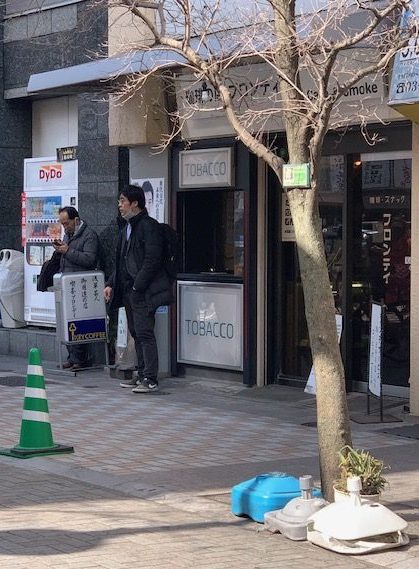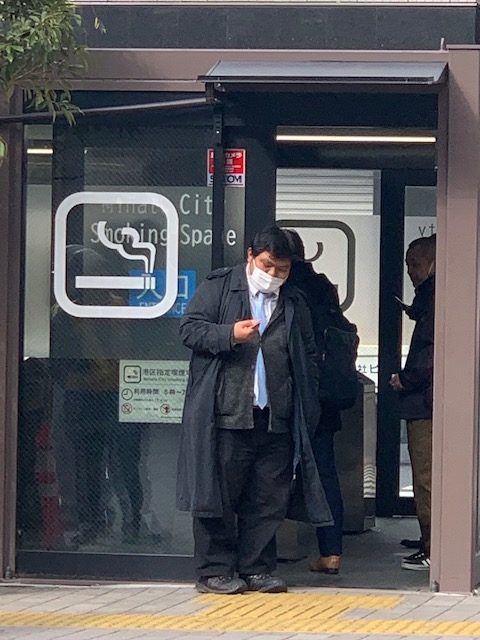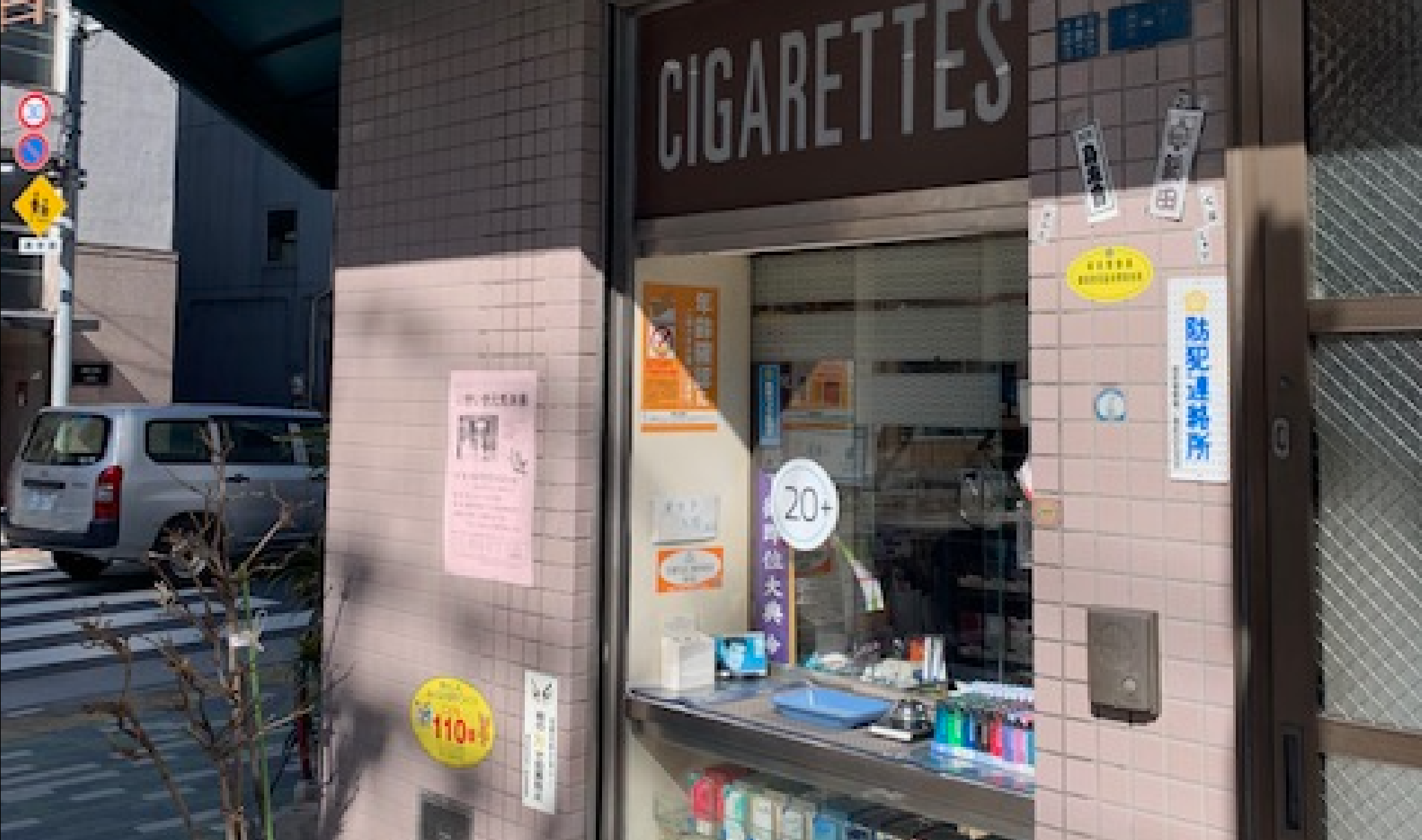I hail from a family of smokers. My parents, their siblings, my cousins, my grandparents. New Years’ family get-togethers were marked by cramped living rooms dense with smoke, full ashtrays waiting to be emptied and rows of beer and sake bottles on low tables. In high school I would come home to find my mother on the couch, inhaling a Caster with her legs crossed and brow furrowed. In these moments she didn’t want to talk or hear about my day. She wanted to be left alone with a thin trail of smoke curling into the air; the unmistakable signal that she had pulled down the shutters and did not wish to be disturbed.
In 1989 when Japan became No.1 (go ahead and laugh) the smoking rate in Japan was around 31% which meant that just about one in three Japanese adults had a cigarette jammed in their mouth. That seems huge but not as much as the year 2000 when the smoking rate hit 33%.
In 2002 I was trying to quit smoking for maybe the third time in my life, meeting with mixed results. I didn’t particularly love the taste of cigarettes but everyone I knew had a pack stashed in pockets or in chic little backpacks. I was one of 11.3% of Japanese female smokers. For males, it was close to a whopping 48%. Overall, the smoking rate in Japan came up to nearly 28%, significantly less than two years ago — though you couldn’t really tell by all the smoking in public.

For many of us cigarettes were a mental prop or psychological crutch depending on how many packs you consumed in a day. In 2002 nearly 50% of Japanese male smokers reported that they went through just one pack a day, while women reported they got through a pack every three days. For me it was more like a pack a week, though I still couldn’t seem to wean myself off for good. One Sunday afternoon I was with friends in a bar in the San Francisco Mission and when I went outside for a smoke, the cute blonde guy behind the counter came out to do the same. We chatted and he invited me to a party that same night, both of us hiding our smiles behind the thin, elegant plumes of smoke that hovered briefly before trailing upwards into an overcast sky. Such incidents made it hard to quit cold turkey. What was I going to do when I wanted to realign or take a break from the conversation? How was I going to meet cute blonde guys working behind the bar?
2002 was also the year the Ministry of Health, Labor and Welfare introduced the Health Promotion Act, which stipulated among other items that smoking was harmful to one’s health and secondary smoke had links to cancer. It was a pretty ineffectual way to get people to discard their cigarette habit. Few paid attention to this Act (as opposed to a law) which was basically the Japanese government’s way of saying “okay, we realize smoking is bad and all that and yeah, we’re going to do something about it. But not today.”
Still, it was time to break up with nicotine. A year later in 2003 in Boston, a couple of weeks into a sizzling hot summer, the city announced the implementation of an indoor smoking ban. None of my friends believed it. The next night we went to this hipster club called Avalon and were shocked – shocked! – to see bouncers confiscating cigarettes at the doors.
Back in Tokyo, smokers were still free to do as they pleased, whether on the streets or at home with their kids. JT (Japan Tobacco) however, took it upon themselves to educate their customers on the perils of secondary smoke and to mind their cigarette manners in public places. Chiyoda ward was the first to ban smoking while walking on the streets and the other wards gradually fell in line. The major newspapers decried that the Japanese were far behind the west in dealing with health issues and released a slew of reports about cigarettes and cancer. I helped a reporter friend research and write some of the articles. While we pulled up the numbers and argued about findings, this friend had a Seven Star dangling from the corner of his mouth the whole time. It never occurred to me to point that out.
I was also hired by a cafe in Shibuya to design their matchbook covers. I put a temporary ban on my personal smoking ban and spent a lot of time in smoke-filled meetings. Matchbook cover design was a thing back then, and the cafe’s policy was to provide great coffee, great music and a chill ambience that suggested cool girls always chose matches over lighters.
In 2007 the cafe went bankrupt and was replaced by a convenience store where people bought coffee from the machine by the cash register and plastic, 100 yen lighters to light up their cigarettes. By this time there were far fewer smokers – only 24.5% of the populace. The media reported that it was the first time since WWII that the numbers were so low. On the streets the smokers were forced into tiny cubicle-like spaces. In cafes and restaurants, they were restricted to smoking areas. Actually, this met with a lot less resistance than expected. The hands that once held cigarettes were now clutching their cellphones, soon to be replaced by the new iPhone.
Thirteen years later in 2020, smoking in Japan was 20% and though the Ministry of Health, Labor and Welfare insisted that this was an all-time low, in 2017 the number came in even lower at 17%, according to privately conducted studies. Interestingly, 2017 is missing from government-issued reports on smoking. The MHLW has insisted that 20% is actually a good number since it’s the global median rate on smoking worldwide. More importantly, this number is below China and the US, which makes the country look good on the health and fitness front. Which is what the Health Promotion Act originally wanted to achieve in the first place: raise awareness about public health issues.
So far, so stable? But as with so many other things, COVID has thrown a wrench in the works. Because of the high levels of stress and anxiety during the first year of the pandemic, smokers have taken to smoking more than they used to. Several surveys indicate that many who had quit relapsed on their habits. The numbers are creeping up again, especially among men. As of 2021, 27% of Japanese men smoked, and that number didn’t include smokers under 18 years of age.
Now in 2023 I’m surrounded by smokers again. In Asakusa where I work during the day, smokers congregate in back alleys and street corners to chat and puff away. Coffee shops doubling as tobacconists are still doing business like it’s 1980. The smoking areas in heavy-duty train stations like Shimbashi and Shinjuku are packed with people of all genders sucking and puffing on tobacco products of all kinds.

Right now, heated tobacco products (HTPs) are trending, encouraged by JT (Japan Tobacco) that endorses HTPs as the ‘polite’ and ‘good-mannered’ way to smoke because of the near-zero secondary smoke. Before HTPs became the socially acceptable way to inhale tobacco, secondary smoke was deemed a leading carcinogen and in 2020, the MHLW upgraded the Passive Smoking Prevention Act from a ‘guideline’ to a ‘rule.’ This pressured offices and public spaces/venues to up their game on smoking bans; not so much for the benefit of the smokers’ health but for the well-being of non-smokers. But despite the fact that heated tobacco products may only be marginally less harmful as regular cigarettes to bystanders and smokers alike, they’ve been given special treatment by the Japanese government. You can see this in the way HTPs are treated and accepted as accessories, with non-smokers often standing right next to people sucking away at their little HTP cases. While we can assume harm reduction is the intended goal, one has to wonder if the health of Japan Tobacco is more important than the health of Japanese citizens.

Smoking doesn’t seem to be going away anytime soon. It’s a highly emotional product and smokers smoke out of sentiment as much as for that hit of nicotine. Why else would people want to bond with a co-worker standing over an ashtray? I know some women who shun remote work just to be able to get out of the house so they can meet up with others in their office building, chatting inside small, crowded smoking spaces. As my friend Sachi said the other day, “Maybe I’ll even find love in a smoking room.”
